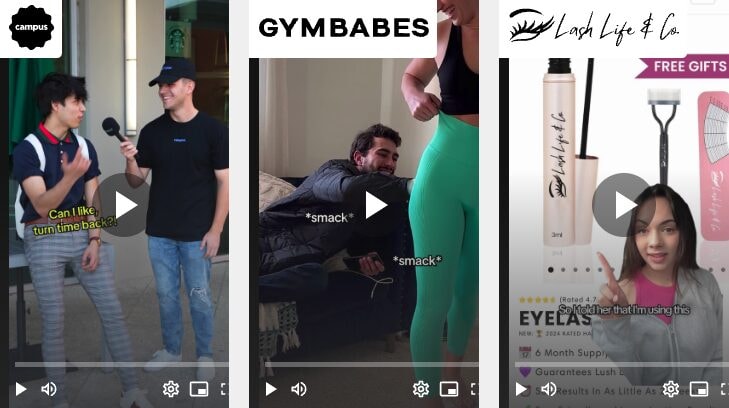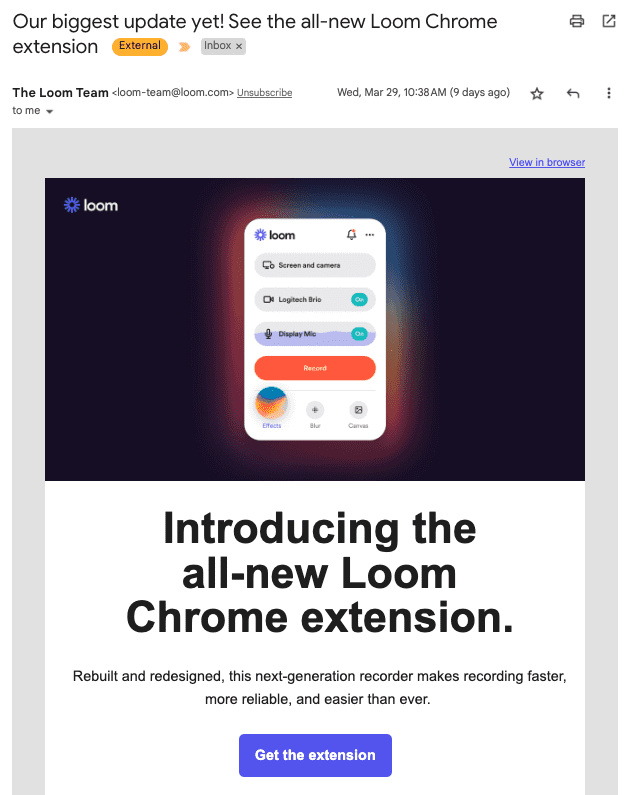How to Leverage User-Generated Content for Winning Products (2025)
Contents

Here’s the thing about dropshipping: user generated content (UGC) can turn an average product into a winning one. I’ve seen it firsthand—when real people share photos or videos of a product they love, it builds trust faster than any polished ad ever could.
Shoppers want proof, and UGC delivers exactly that. It shows your product works and that others are happy with it. In this guide, I’ll show you how to leverage UGC to attract buyers, build trust, and boost your conversions.
Key Takeaways
- User-generated content (UGC) builds trust by showing real customers using and loving your products.
- Add UGC like photos, videos, and reviews to product pages, ads, and emails to boost conversions.
- Tools like Sell The Trend help you find trending products with proven social proof to generate more UGC.
- Encourage social media users to share content with contests, branded hashtags, or incentives.
- UGC in retargeting ads and before-and-after comparisons helps win back visitors and build confidence in your products
Why does UGC help you Sell More Products?
UGC helps you sell more products because it builds trust and removes doubt. One thing I notice about many dropshipping stores is that they rely too much on product photos or descriptions provided by suppliers.
The result? Shoppers don’t believe what they see.
Why? Professional photos don’t feel real. They look staged, and customers want to see the product in action. UGC—like real photos, videos, and reviews from buyers—proves the product works and creates the “if it’s good enough for them, it’s good enough for me” feeling.
From what I’ve seen, stores that feature UGC not only boost trust but also increase sales because shoppers relate to real customers more than polished ads.
How To Leverage User-Generated Content: Strategies To Turn Shoppers Into Buyers
What exactly does it mean to leverage user-generated content, and how can it help you turn your products into winners? In this section, I won’t just tell you where to use UGC, but I’ll show you the best strategies to make it work for your dropshipping store.
There are 10 proven ways to leverage UGC effectively. Let’s break each one down step by step.
1. Add Customer Photos & Reviews To Your Product Pages

Customer photos and reviews are essential for turning your product pages into trust-building tools. Without them, visitors only see polished supplier images that often feel staged or fake. The truth is, shoppers want to see proof—real people using the product and sharing their experiences.
How do you add this proof effectively?
Start by featuring customer photos alongside your product images. These don’t need to be perfect; raw, authentic pictures often work better.
A happy customer holding or using the product builds instant trust because it answers the shopper’s biggest question: “Will this product work for me?”
As for reviews, focus on those that highlight the benefits of your product. For example, if you’re selling a posture corrector, reviews that mention improved comfort or better posture carry more weight. Encourage customers to leave photo reviews by offering small rewards, like a discount on their next purchase.
What matters most is this: people trust people. When visitors see others enjoying the product, it removes doubt and builds confidence. Without customer photos and reviews, even the best product page can struggle to convert.
If you’re serious about increasing sales, make UGC a priority on your product pages. It’s one of the easiest ways to turn window shoppers into paying customers.
2. Use UGC In Facebook & TikTok Ads

User-generated content (UGC) works like magic on social media platforms like Facebook and TikTok ads. Why? Because it feels real. Unlike polished ads that scream “sales pitch,” UGC comes across as genuine and relatable.
Shoppers are more likely to trust someone who looks like them, sharing their honest experience with a product.
How do you use UGC in ads effectively?
Start by turning customer photos or short videos into ad creatives. For example, if you’re selling a portable blender, use a video of a customer blending smoothies on the go. It’s quick, simple, and shows the product in action. This type of content blends seamlessly into a viewer’s feed because it looks like a regular post, not an ad.
On TikTok, UGC works even better when it feels like a “story.” Videos of customers unboxing the product, testing it, or sharing “before and after” results grab attention. Combine this with trending sounds or video captions, and your ad feels natural while still selling the product.
Here’s the bottom line: UGC ads build trust and stop the scroll. People relate to real people. By showing happy customers using your product, you’re not just advertising—you’re proving that your product works. That’s how you turn viewers into buyers.
3. Highlight UGC In Social Proof Pop-Ups

Social proof pop-ups are small but powerful tools that can help you leverage user-generated content (UGC) to boost conversions.
These pop-ups show real-time updates like, “Sarah from New York just bought this product!” or display customer photos and reviews. They create urgency, build trust, and show visitors that people are actively buying and loving your product.
Why does this work?
Shoppers are naturally hesitant, especially with new brands. Seeing others make purchases reassures them that the product is legit. If they see a pop-up with a photo or a short review like “Best purchase ever!” it adds an extra layer of credibility. It’s subtle, but it makes your product feel popular and trusted.
How can you set this up?
Use tools like Fomo, TrustPulse, or ProveSource to automate social proof pop-ups on your store. These tools can pull real-time UGC from customer purchases, photos, or reviews and display them on your site. Pair these pop-ups with visuals like a happy customer holding your product, and you’ve got instant trust.
At the end of the day, social proof pop-ups make shoppers feel like they’re not alone. They see others buying and enjoying the product, which pushes them to do the same. It’s an easy way to turn hesitation into action.
4. Include UGC In Retargeting Campaigns
Retargeting campaigns are your second chance to win back visitors who didn’t buy the first time. But here’s the thing: showing the same product image or ad again rarely works. That’s where user-generated content (UGC) comes in.
It adds a fresh, relatable element that makes shoppers rethink their decisions.
Why does UGC work so well in retargeting?
Because it removes doubt. Visitors who left your store likely weren’t convinced—maybe they questioned the product’s quality or wondered if it works.
By showing UGC, like a real customer using or reviewing the product, you’re providing the proof they need to trust you.
Here’s how to do it:
For Facebook or Instagram retargeting, create ads using customer photos, reviews, or short videos.
Show the product in action and pair it with captions like, “See why 1,000+ customers love this!” On TikTok, use UGC clips with a personal, storytelling feel—something that looks less like an ad and more like a recommendation from a friend.
Retargeting with UGC reminds shoppers that others are happy with the product. It feels authentic, builds trust, and gives them the nudge they need to come back and hit “buy.”
5. Feature UGC In Product Launch Emails

Product launch emails are a powerful way to introduce new items to your audience, but adding user-generated content (UGC) can make them even more effective. Why? Because UGC gives shoppers immediate proof that others are excited about the product, which builds trust and curiosity right from the start.
Here’s how it works:
Instead of relying only on product photos or polished descriptions, include customer photos, short testimonials, or video clips in your emails.
For example, if you’re launching a new kitchen gadget, feature a photo or video of a customer using it and say, “This made cooking so much faster and easier!” Seeing real people already benefiting from the product makes it feel reliable and worth trying.
To collect UGC for a launch, consider sending early samples to loyal customers or micro-influencers in exchange for honest feedback. Once you have their content, highlight it in the email with captions like “See what customers are saying!” or “Real people, real results.”
This approach does two things: it makes your product look popular before it’s widely available, and it helps overcome skepticism. When shoppers see others using and loving the product, they’re more likely to trust it and make a purchase.
6. Run Hashtag Challenges To Collect Content

Running hashtag challenges is one of the easiest and most engaging ways to collect user-generated content (UGC). It encourages your customers to share photos, videos, or reviews of your product while tagging your brand with a specific hashtag.
This not only gives you a steady flow of UGC but also helps spread the word about your product organically.
Here’s how you can do it:
First, create a simple and fun challenge that your audience can easily participate in. For example, if you’re selling fitness gear, ask customers to post a short video of them completing a workout using your product with a hashtag like #MyFitnessChallenge. Offer a small incentive, like a chance to win a free product or a discount, to encourage participation.
The best part? Hashtag challenges build excitement and create a sense of community. As more people post content, it builds momentum, making your brand look popular and trusted. Plus, you’ll have tons of UGC to repurpose for ads, product pages, or social media.
I’ve seen brands turn one simple hashtag challenge into viral campaigns with hundreds of submissions. The key is to make the challenge easy, rewarding, and fun.
7. Showcase UGC On Your Store’s Homepage

Your homepage is often the first impression visitors get of your store. If it only features product photos and generic descriptions, it can feel cold or untrustworthy. By showcasing user-generated content (UGC) on your homepage, you make it look real, relatable, and instantly credible.
Why does this matter?
Visitors want to know that your store is reliable and your products deliver results. Adding UGC—like customer photos, video testimonials, or short reviews—shows that real people are buying, using, and loving what you sell.
How do you do this effectively?
Create a dedicated section on your homepage to highlight UGC. Tools like Loox or Yotpo can pull in customer reviews with photos and display them seamlessly.
You can also feature a scrolling banner of social media posts tagged with your branded hashtag or embed short video clips of customers sharing their experiences.
8. Leverage UGC In Influencer Promotions
Influencer promotions are a proven way to reach new audiences, but combining them with user-generated content (UGC) takes it to the next level. Why? Because UGC makes influencer content look even more authentic and relatable, helping you build trust while driving more sales.
Here’s how it works:
Instead of asking influencers to post overly polished product shots, encourage them to create content that feels like UGC—casual photos, unboxing videos, or honest product reviews.
For example, if you’re selling a skincare product, an influencer could show a “before and after” using your product, sharing their real results and tagging your store.
To make this work even better, ask influencers to use a branded hashtag or feature UGC from existing customers in their promotions. When their audience sees both the influencer and real buyers sharing similar experiences, it creates a stronger sense of trust and community.
The best part? Influencer-generated UGC can be repurposed for ads, product pages, and social media feeds. It’s cost-effective, versatile, and feels far more genuine than typical influencer promotions.
9. Turn UGC Into Videos For Ads
UGC videos are some of the best-performing ad creatives you can use, and for good reason—they look natural, relatable, and real. Instead of feeling like an ad, they feel like someone sharing their honest experience with a product.
How should you create these videos?
Look for UGC that tells a story. For example, if you’re selling a posture corrector, a video showing someone slouching “before” and sitting straight “after” is far more impactful than a product photo. You can combine short clips of customers unboxing the product, using it, or sharing quick reactions like, “I can’t believe how comfortable this is!”
Don’t stop there. Add text overlays to highlight key benefits, like “Improves posture in just 2 weeks!” or “Over 10,000 happy customers.” This way, even if someone watches without sound, the message still lands.
Why does this work? Because UGC videos look like personal recommendations, not polished sales pitches. People scrolling through Facebook, TikTok, or Instagram are more likely to stop and watch something that feels genuine.
10. Use UGC In Testimonials & Before-After Comparisons
User-generated content (UGC) works incredibly well in testimonials and before-and-after comparisons because it shows clear, real results. Shoppers want to know if your product actually works, and nothing proves it better than seeing transformations from real customers.
How do you use this effectively?
Start with testimonials that feel personal. Instead of generic reviews like “Great product!”, focus on those that share specific results.
For example, if you’re selling a teeth-whitening kit, a testimonial saying “My teeth were two shades whiter in a week!”paired with a smiling photo adds trust and credibility.
Before-and-after comparisons are even more powerful. These visuals highlight exactly how your product solves a problem. If you’re selling a posture corrector, show someone slouching “before” and sitting tall “after.” Add captions like “Real customer results in just 2 weeks!” to make the message clear and impactful.
FAQs: How To Leverage User-Generated Content For Winning Products
Here are common questions about using user-generated content (UGC) to boost your dropshipping success:
1. What Do You Mean By User-Generated Content?
User-generated content refers to user content created by your customers, not your business. It includes photos, videos, online reviews, and testimonials that show your product in action. UGC builds trust because it comes from real people, helping you connect with potential customers more effectively.
2. What Is A UGC Content Example?
A great example of UGC is a customer posting a photo of themselves using your product on their favorite social media channels. For instance, someone might share a video using your portable blender on a camping trip. You can then share user-generated content on your brand’s social media to highlight its benefits.
3. What Is UGC And How Does It Work?
UGC, or consumer generated content, works as an authentic part of your marketing strategy. You collect it through UGC campaign or encourage your customers to post about your products. UGC can be used in social media marketing, marketing campaigns, and even influencer marketing to increase brand awareness and build brand loyalty. It shows shoppers real experiences and boosts their confidence in your product.
4. Can You Make Money Doing UGC?
Yes, absolutely. Many UGC creators make money by creating authentic content for brands. Businesses pay creators to feature products in their posts, videos, or reviews, turning UGC into a powerful part of their user-generated content marketing and overall marketing efforts. It’s a win-win: brands gain credibility, and creators earn income.
Conclusion
User-generated content (UGC) is one of the most powerful tools to turn your products into winners. It builds trust, increases conversions, and shows potential buyers that your products work. By adding UGC to your product pages, ads, emails, and social media, you can create a marketing strategy that feels real and relatable.
Remember, social media users love sharing their experiences. Encourage them to post photos, videos, and reviews of your products. The more UGC you collect, the easier it becomes to attract new customers and grow your brand.








